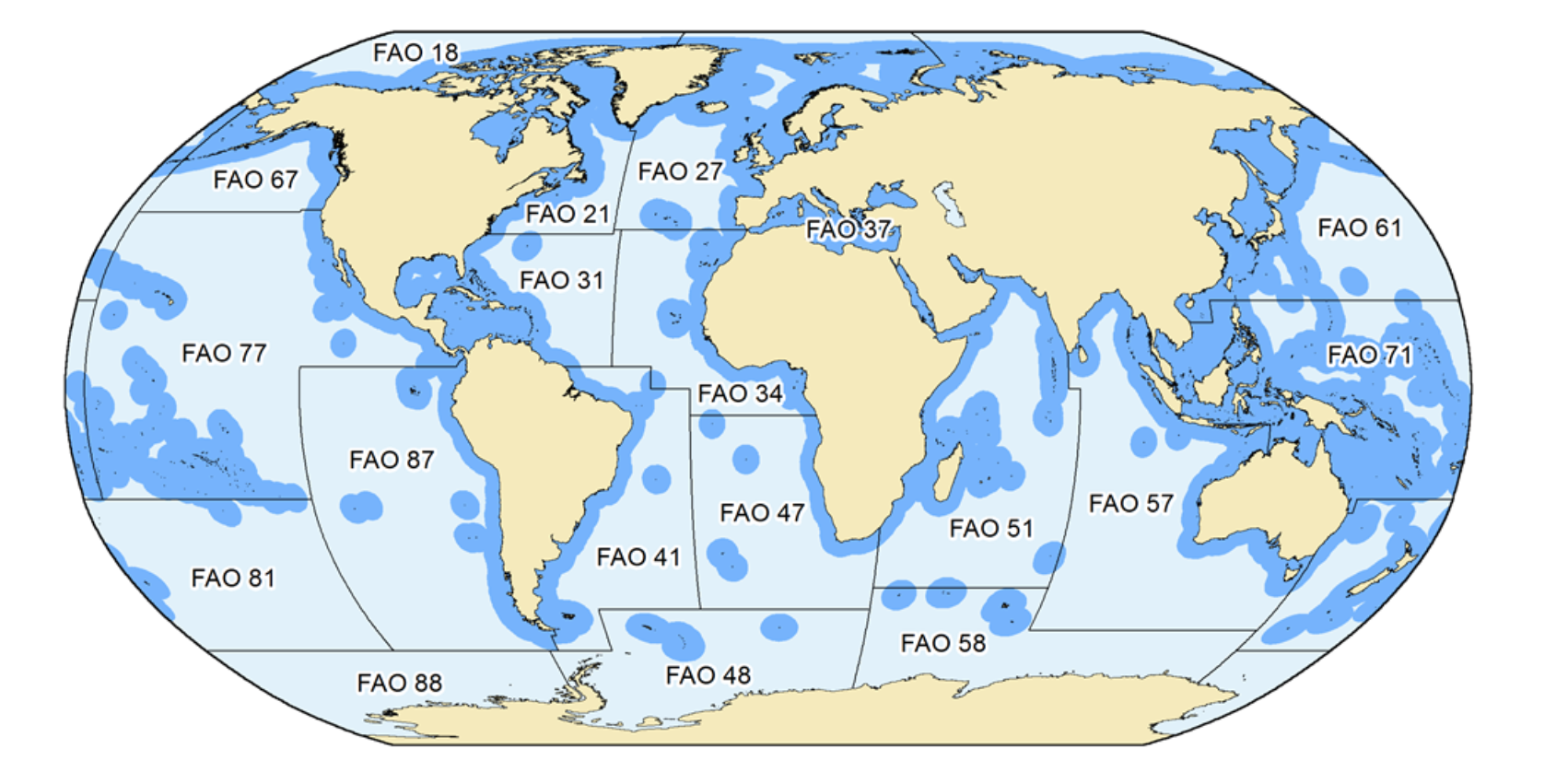Policy support tool
Fisheries catch reconstruction

A method providing time-series of marine fisheries catches in the waters within the Exclusive Economic Zones (EEZ) since 1950, the first year that the Food and Agriculture Organization of the United Nations (FAO) produced its annual compendium of global fisheries statistics.
The country-by-country fisheries catch data reconstructions are based on the rationale in Pauly (1998), as first implemented by Zeller et al. (2007). The former contribution asserted (i) there is no fishery with ‘no data’ because fisheries, as social activities throw a shadow unto the other sectors of the economy in which they are embedded, and (ii) it is always worse to put a value of ‘zero’ for the catch of a poorly documented fishery than to estimate its catch, even roughly, because subsequent users of one’s statistics will interpret the zeroes as ‘no catches’, rather than ‘catches unknown’.